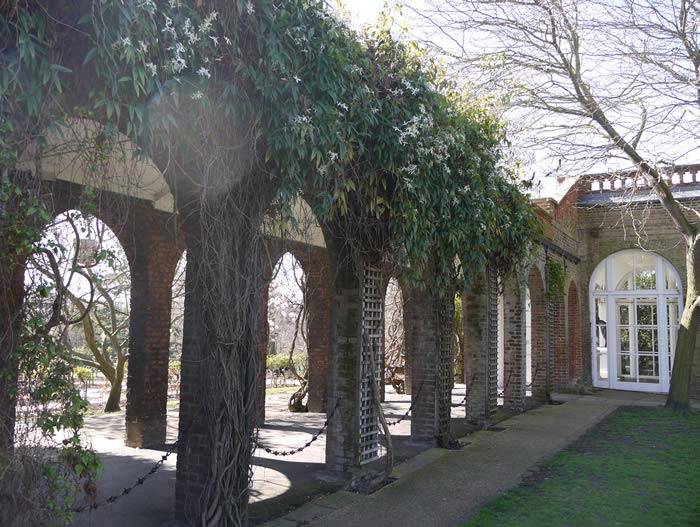
"Clematis armandii (Evergreen Clematis) - This vigorous evergreen vine climbs to 15 feet and as wide using tendrils and is densely covered with pendulous compound leaves with 3 long lance-shaped leaflets that are up to 5 inches long and a bronze color when first emerging, then turning a glossy dark green with age. In late winter to early spring appear the clusters of fragrant 2 1/2 inch wide white flowers on the previous year's growth. Plant in sun or light shade with moderate water - shade is a must in hotter inland gardens but on the coast it tolerates deep shade but blooms best with bright light or full sun. It is hardy to around 10 degrees F (and some claim it can be grown in USDA Zone 6a to -10 °F). It is susceptible to leaf burn if water quality is poor. Best if pruned right after flowering to clear out dead foliage and to control growth. With its several annual growth flushes, even after pruning it will rapidly rebound to create a dense cover and grow new flowering stems for the following year. It provides a wonderful texture in the garden and makes a great screening plant that is attractive in our out of bloom. It is reported to be resistant to deer predation with flowers attractive to bees, butterflies and birds. Evergreen Clematis naturally inhabits forests, forest margins and riparian areas from just over 300 feet to nearly 8,000 feet in elevation in central to southern China and northern Myanmar. The genus name is from Ancient Greek 'clématis' which was the name for a climbing plant and may have as a root the Greek word 'klema' which means "a twig" or "a branch". The specific epithet given this plant in 1885 by the French botanist Adrien René Franchet honors the French Missionary botanist Père Armand David (1826-1900) who first collected the type specimen. This vine was first introduced into cultivation in England in 1900 and in the US in 1934 by the Bureau of Plant Introductions (USDA). We have been growing this great plant since 1982. This description is based on research and observations made of this plant as it grows in our nursery, in our nursery garden and in other gardens that we have visited. We also try to incorporate comments received from others and appreciate getting feedback of any kind from those who have any additional information about this plant, particularly if they disagree with what we have written or if they have additional cultural tips that would aid others in growing Clematis armandii."
'via Blog this'
No comments:
Post a Comment